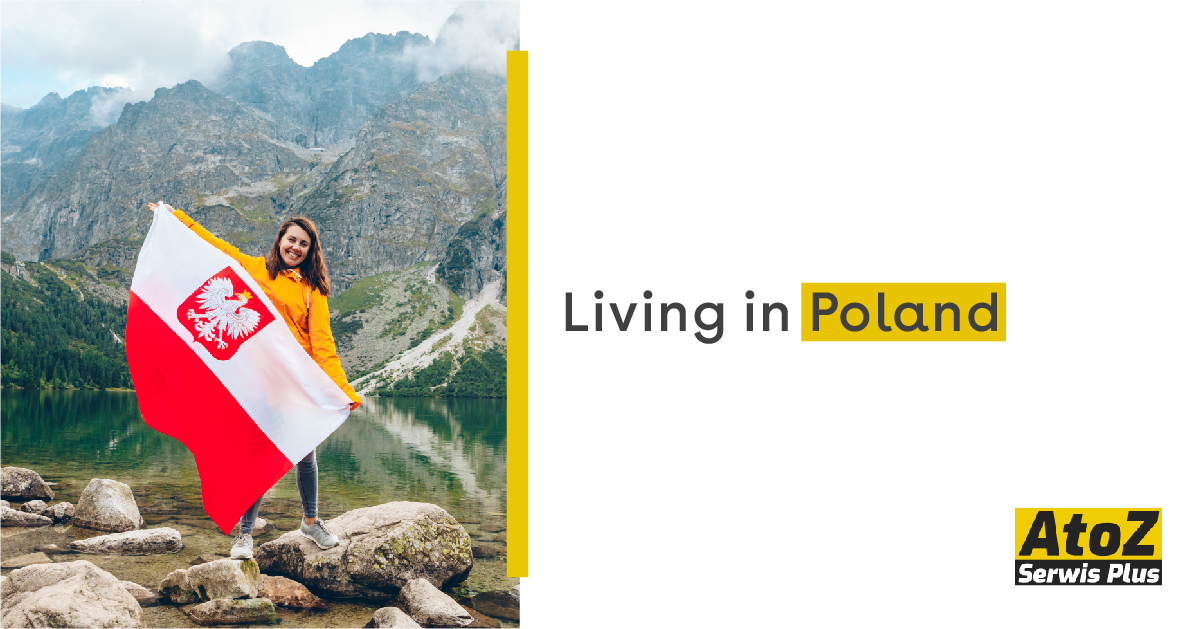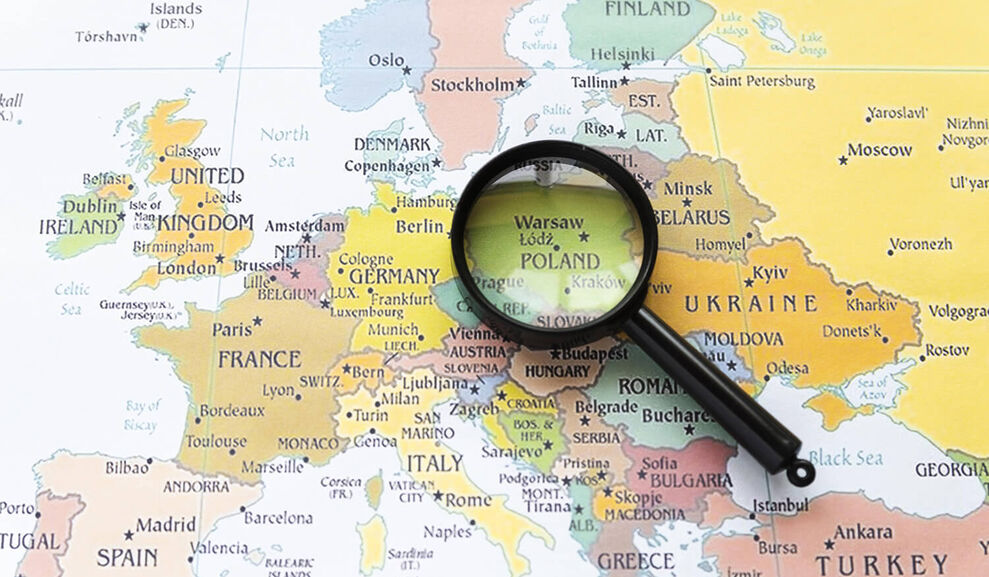

Living in Poland
Life in Poland has undergone a significant transformation since the early 1990s, largely for the better. As a result of Poland's 2004 EU membership, the economy received billions of euros in investment, which impacted both individual income levels and the nation's overall prosperity. Many immigrants from nearby nations, particularly Ukraine, are drawn to the country by its stability, rapid economic growth, and acceptable living conditions.
Thousands of Ukrainians have gained residence cards in Poland during the past few years, and if we consider seasonal and unauthorised labour, there are millions of migrants. Additionally, many foreign nationals apply for a card known as a "Polish card," which grants them a variety of rights including the freedom to work and transact business in Poland. We will continue our discussion of the costs of living, taxes, types of jobs, wages, and advantages and disadvantages of living in Poland in 2023.
Poland has a population of around 37.7 million people. Almost 98 percent of the population here identify as ethnic Polish. There are also many Germans, Belarusians, and Ukrainians living in the nation. The best cities to live in Poland in 2023, according to surveys of immigrants, are Wroclaw, Poznan, and Krakow. We discuss both the advantages and disadvantages of relocating permanently to Poland.
Pros of living in Poland
- Membership in the European Union allows citizens and permanent residents of Poland to move freely within the Schengen area and enjoy a number of other benefits within this association.
- Even in Poland's larger cities the cost of living and rental prices are reasonable, including the capital Warsaw.
- Poland has a rich history and culture, monuments and museums are located everywhere. Many cities are constantly full of exciting exhibitions, concerts, fairs, music festivals, great sporting events and vibrant nightlife.
- The Baltic coast makes your stay in Poland more pleasant than life in the Czech Republic, which has no access to the sea. In addition, there are many other beautiful places, including – lakes, forests, plains and mountains.
- Poland has an effective system of higher education, an extensive network of public transport and quality health care. At the same time, private health care is relatively cheap.
- Poles are very open, sociable and friendly people. Young people speak English well, and the older generation even speaks Russian.
- There is a low level of terrorist threats and few natural disasters.
Cons of living in Poland
- Relatively high prices of everyday goods, such as clothes.
- There are still elements of corruption and bureaucracy in public and budgetary institutions in Poland.
- The public health system is overburdened and works very slowly. Many immigrants complain that it takes months to get an appointment with a specialist.
- There are cases of negative attitudes on the part of Poles toward immigrants from CIS countries.
- Fans of warm weather should be aware that in winter in Poland can be quite cold.
- Despite significant progress, in comparison with Western Europe, roads in Poland are far from ideal.
- Wages are still much lower than in more successful EU countries.
Prices and cost of living in Poland
The lion's share of expenses for foreigners in Poland is connected with renting real estate. In this respect, the country compares favorably with more developed European countries. On the other hand, earnings here are also much less. The cheapest cities to live in Poland are Bialystok, Torun and Bydgoszcz. The most expensive cities are Warsaw, Wroclaw and Gdansk.
| City | Up to 60 sq. m (PLN/month) | Over 60 sq. m (PLN/month) |
| Warsaw | 1,980 – 2,800 | 2,900 – 4,100 |
| Wroclaw | 1,480 – 2,260 | 2,300 – 3,000 |
| Gda?sk | 1,350 – 2,000 | 1,400 – 2,600 |
| Katowice | 1,280 – 1,770 | 1,800 – 2,400 |
| Krakow | 1,450 – 1,880 | 1,900 – 2,590 |
| Lublin | 1,300 – 1,690 | 1,700 – 2,210 |
| Poznan | 1,160 – 1,640 | 1,650 – 2,200 |
Prices in Poland in 2023
- Bread (500 g) – 4.15 z?
- Milk (1 L) – 3.34 z?
- Eggs (12 eggs) – 10.69 z?
- Chicken Fillets (1 kg) – 21.79 z?
- Potatoes (1 kg) – 2.87 z?
- Polish cheese (1 kg) – 30.06 z?
- Bananas (1 kg) – 5.46 z?
- Apples (1 kg) – 3.73 z?
- Petrol (1 liter) – 6.70 z?
- Cab (1 km) – 2.80 z?
- Public transport tickets – 4.00 z?
- Monthly bus pass – 109 z?
- Utilities (85 sq. m.) – 898.70 z? per month
- Mobile telephone (minute) – 0.27 z?
- Internet – 57.83 z? per month
Note. Prices are quoted in local currency – the Polish z?. The exchange rate of one z? today is 0,2 US Dollar/Euro.
Taxes in Poland
The tax system in Poland today is almost completely in line with European standards and is characterized by simplicity and fairly low interest rates. Income tax is levied on both residents and non-residents who work under an employment contract.
Tax Rates in Poland in 2023
VAT. The basic rate is 23%. Reduced rates are 8% (delivery of medical equipment, food products), 5% (certain types of products and books) and 0% (domestic and international passenger transport).
Income tax, dividends, interest – 19%
Non-taxable amount – 30,000 PLN
Income tax:
- Annual income from 0 to 120,000 PLN – 12% (minus 3,600 PLN)
- Annual income over 120,000 PLN – 10,800 PLN + 32% from the amount exceeding 120,000 PLN
Social contributions (employee/employer):
- Health insurance – 9%. At the same time, 7.75% is a tax credit, so in fact the employee is charged 1.25%.
- Pension Fund – 27.52% (11.26/16.26%)
- Disability insurance – 8% (1.5/6.5%)
- Health insurance – 2.45% (employee)
- Accident insurance – 0.67-3.33% – more than 9 employees and 1.67% up to 9 employees (employer)
- Labor Fund – 2.45% (employer)
Jobs and wages in Poland
The unemployment rate in Poland in 2023 does not exceed 5-7%. The official minimum wage since January 1 is 22.80 z? per hour (5 euros) or 3,490 z? per month (745 euros). According to the Polish Central Statistical Office, before taxes, the average salary in Poland in 2023 is 5,995 z? per month (1,255 euros). After all mandatory deductions an employee has 4,315.5 z? (905 euros) at his or her disposal.
The highest income in Poland was recorded in the Lower Silesian Voivodeship (Wroc?aw) – 6,676.94 PLN (1,325 EUR), and the lowest in the Warmian-Masurian Voivodeship (Olsztyn) – 4,763.06 PLN (975 EUR). By sector, the leaders are information technology and communications – 10,355.97 PLN (2,165 EUR) and the supply of electricity, gas, steam and air conditioning – 8,735.6 PLN (1,830 EUR), and in terms of professions, doctors earn the most – 7,500 PLN (1,570 EUR) and programmers – 6,500 PLN (1,360 EUR).
Official employment in Poland implies a preliminary search for a vacancy, signing a contract, obtaining a work permit and opening a Polish work visa. In addition, local laws allow you to hire workers from Ukraine, Belarus, Moldova, Russia and Armenia for up to 180 days a year without a special permit. And in some cases, up to 3 months within six months, even without a work visa.
The most popular occupations in Poland in 2023 are engineers, construction workers, workers in agriculture, drivers, cooks, and trades – welders, installers, turners, electricians, masons, rebar workers, tilers. Women can work as maids, cleaners, seamstresses, packers, cashiers, and harvesters. Skilled foreign workers earn from 1,200 to 1,500 euros and above. Workers without special qualifications earn up to 500-800 euros.
Higher education in Poland
The Polish higher education system has a long tradition, is of high quality and is in demand by foreigners. Today, more than 55 thousand students from abroad attend local university auditoriums. One of the most attractive features of studying in Poland is the relatively low cost of living. On average, it takes about 500-700 euros per month.
There are more than 500 institutions of higher education in Poland, including public and private. The prestigious QS World University Rankings 2023 include 22 universities. The most famous are the Warsaw University, the Jagiellonian University and the Polytechnic University in Warsaw. The average cost of studies in public universities in Poland for foreigners is 2-3 thousand euros per year.
Medicine in Poland
Over the last 20 years the health care system in Poland has undergone a major transformation, the quality of medical services has improved and financing has increased. The annual expenditures of the state for this sphere amount to about 4-5% of GDP. More than 40% of the funds are earmarked for the treatment of the local population in Polish hospitals.
As in most European countries, health care in Poland is based on a general health insurance system, thanks to which services are practically free of charge for local residents. In addition, there are many private clinics with qualified doctors and modern equipment.
In conclusion, life expectancy in Poland in 2023 is 78 years (74 for men and 81 for women).





